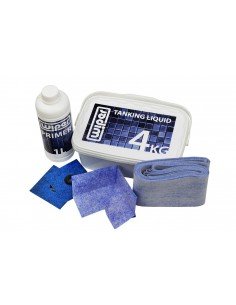- Jackie
- Shower drains
- 1232 views

Maintenance With Minimum Fuss
Bathroom maintenance is no drop in the ocean, with the average UK homeowner spending £364/yr on home repairs. Given the intricate nature of bathrooms, with gas, plumbing and electrics intertwining into each fitting, the potential for things to go wrong is up there.
With attractive wetroom designs ever popular, the emphasis is now on having water freely flowing within your bathroom, increasing the need for durability and flexibility in appliances - and the need for maintenance that brings. This article should hopefully shed a little light on what you can do with several common home repair issues.
No Hot Water
A common problem in many bathrooms and often one that actually needs a minimum of repair, but can strike fear into the heart of homeowners, is the day when the hot water stops running. Especially with integrated systems, a lack of hot water can mean a lack of showers, dish-washing and, in the cold winter months, heating. The reasons for your hot water being off are often a lot simpler than you think, though.
Bearing in mind that different boilers have different problems, make sure you correctly identify which type your house has before attempting to make repairs. Also diagnose your problem in basic terms; if it's a case of you're running out of hot water, rather than the water not getting hot in the first place, your needs might be outstripping the size of the boiler. With that done, you can assess the problem; for gas, this usually entails investigating the state of the gas supply and pilot light; and for electric, that the filament and circuit are working correctly.
Damp and Mould
These two are some of the biggest impediments to a clean and properly working bathroom in the UK and especially in colder, damper months. The basics for keeping damp at bay are simple - open up the window when you're taking a shower, or run a ventilator fan. Keep the window sills clean and try and have UPVC installed to keep the temperature differences out.
If you've got an enterprising mind and a bit of spare money, however, there are several DIY methods to mitigate damp. Using eco-friendly materials, it's possible to drill your own ventilation shafts and bring warmth and dryness to your house.
Most of the problems in your bathroom surround, unsurprisingly, the way water finds it's way into every crack and crevice, creating mould and damp that can have long-lasting effects or affecting your hot water system. Luckily, it's not all that tough to fix, as we've shown - so next time you've got an issue, get your toolbox out and take another look at this guide.








